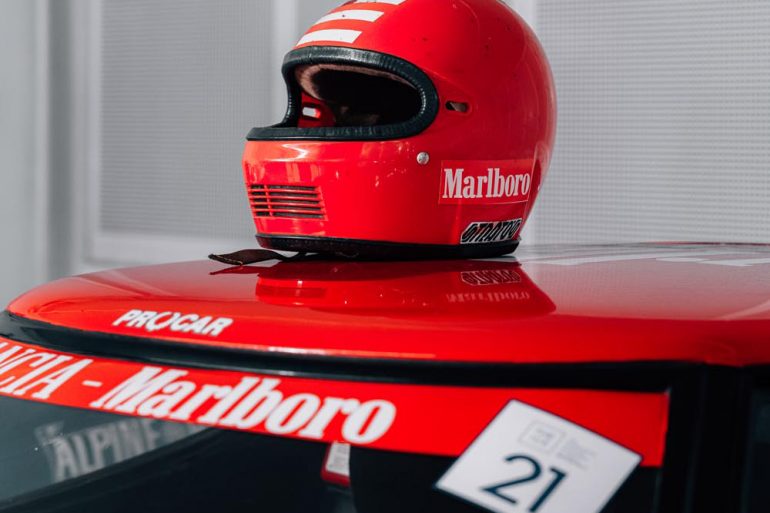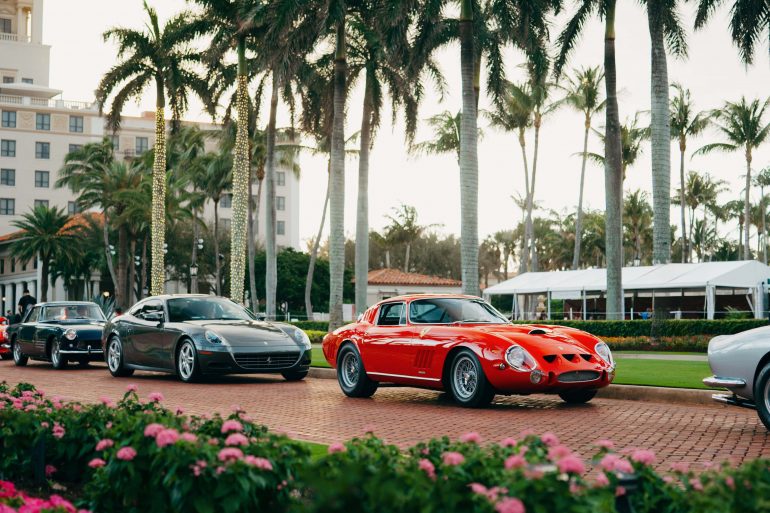Square of Italy is a cool photographic project that offers stunning zenith views from all over Italy. Behind it, there is an amazing selection of Google Earth Pro shots and we discovered that few of them, for us at Car&vintage, are particularly worth to be mentioned. If you are a petrolhead, a simple car enthusiast or a motorsport addicted you might have already experienced Italy’s most famous race circuits, and – unless you have been lucky enough to reach them with an helicopter – you never really seen them from above.
Ready? Here we go.

The Misano World Circuit Marco Simoncelli sits next to the town of Misano Adriatico, not far from Rimini, in the town district of Santa Monica-Cella. Originally designed in 1969 with a length of 3,488 km, it hosted its first event in 1972. In 1993, the track length was increased to 4,064 km and, as of 2007, it began hosting the San Marino and Rimini Coast Grand Prix as part of the MotoGP World Championship.
Current Moto GP lap record bears the name of Francesco Bagnaia, who lapped in 1:32.319 with his Ducati Desmosedici GP20 during the 2020 Grand Prix. As for reference, Robin Frijns – during the 2019 DTM round here – stopped the instruments after 1:27.291 while driving his Audi RS5 Turbo DTM.

Every single part of the track, must be able to put to the test the dynamic behavior of the car in such a way that makes easy the identification of the problems of every car. From this moment on, I don’t want any Ferrari to tackle the track or address mass-production without passing the Fiorano test with flying colours.
Enzo Ferrari
The Fiorano Circuit is located a few kilometers far from Ferrari’s Maranello factory and has a FIA Grade 1 license. Built in 1972, it was originally 8.4 metres wide and 3,000 km long. In 1992, a chicane was added making it 3,021 km long, then in 1996 a new renovated track was introduced – a fast bend to replace a sharp corner at the end of the pit straight – which shortened the total length by 24 metres.
An average Formula 1 lap speed gets over 160 km/h and with top speeds around 290 km/h. As Fiorano is a private testing track, it has a wide range of corner types, with corner diameters between 370 and 13,71 metres. Thus Ferrari is able to simulate corner and track types of other Grand Prix circuits. The Fiorano Circuit’s record is still hold by Michael Schumacher, who lapped in 55.999 with his F2004 in 2004.
The track is equipped with telemetry sensors and a large skidpad for tires testing. In 2001, an irrigation system using rain collected in eight cisterns was installed to simulate wet track conditions. When Scuderia Ferrari is testing at the track, it is common to see many people watching activities from the roadside, which is the closest point from which the track is viewable to public.

The Mugello Circuit is located near Scarperia e San Piero, Tuscany. The circuit length is 5,245 km, it has 15 turns and a 1,141 km long straight.
FIM host an annual event here – for MotoGP and smaller classes; in 2007 and 2008 the Deutsche Tourenwagen Masters did the same with their cars. The circuit hosted its first ever Formula 1 race on September 13, 2020, named the Tuscan Grand Prix, as part of the season being restructured due to the COVID-19 pandemic: the event was the 1000th Grand Prix for Scuderia Ferrari – which owns the circuit and used for testing purposes.
Road races were held on public streets around Mugello from the 1920s. The start was in the village of Scarperia e San Piero, less than half a kilometer from the current permanent circuit. The track went north up the SP503, twisting and turning through mountains through multiple villages, up to the town of Firenzuola, then continuing on the SP503 towards the village of Pagliana, then again a left on the SR65, heading south through the villages of Covigliaio, Selva and Traversa, where the circuit got a bit faster, and again entered the famous Futa Pass, which was used for the Mille Miglia. After this twisty section, the course stayed on the SR65 and went down multiple short straights and fast curves before getting to the villages of Le Maschere and Colle Barucci. The circuit then crossed a bridge going over a narrow section of the Bilancino Lake, going through an ultra fast left hand curve and two long straights before turning left onto the SP129, heading towards the town of San Piero a Sieve, finishing going north back onto the SP503, and heading back to Scarperia to finally end the lap. A Targa Floria-like road race.
Lewis Hamilton, in 2020, set the pole position with 1:15.144 while driving his winning Mercedes-AMG F1 W11 EQ Performance.

Originally known as Fiat’s Nardò test track when it was built in 1975, this high speed ring – with its internal circuit/tracks – is located 25 km far from Nardò, Lecce. In 2012 it was acquired by Porsche Engineering and now the whole site is called Nardò Technical Center.
The perfectly round main track is 12,500 km long and 16 metres in width, with a separate inner ring for trucks at a width of 9 metres. In the cars/motorcycle ring the lanes are banked at such a degree that a driver in the outer most lane does not need to turn the wheel while driving at speeds of up to 240 km/h. However, extremely fast cars still require the steering wheel to be turned when going faster than the maximum neutral speed. For example the Koenigsegg CCR which set a speed record for a production car – 388 km/h, driven by Loris Bicocchi – did so with the steering wheel at a 30° angle.
During regular weekly working activity the maximum speed allowed on the circular track is 240 km/h: higher speeds are only allowed at times when a client gets the track for its exclusive use.
Recent news is that Porsche engineers subjected the brand new 911 GT3 to a continuous test run at a constant speed of 300 km/h with the only breaks for the car – and drivers – refueling: the naturally-aspirated 9.000 rpm supercar covered an impressive 5.000 km without hesitations.

Known as the Temple of Speed, the Autodromo di Monza was built in 1922, and it was the world’s third purpose-built motor racing circuit after Brooklands and Indianapolis. The circuit hosted the Formula 1 Italian Grand Prix since 1949, with just the exception of the 1980.
Built in the Parco di Monza – one the biggest enclosed parks in Europe – it has three tracks: the 5,793 km Grand Prix track, the 2,405 km Junior track and a 4,250 km high speed oval track with steep bankings which was left unused for decades and had been decaying until it was restored some ten years ago. The major features of the Grand Prix track include Curva Grande, Curve di Lesmo, Variante Ascari and Curva Parabolica. The high speed curve, Curva Grande, is located after the Variante del Rettifilo which is located at the end of the front straight or Rettifilo Tribune, and is usually taken flat out by Formula 1 cars.
Maximum speed achieved in a 2020 Formula 1 car is 360.8 km/h; in the same year Lewis Hamilton recorded the pole position lapping in 1:18.887 with an average speed of 264.362 km/h – the fastest average lap speed ever recorded in qualifying for a World Championship event.









